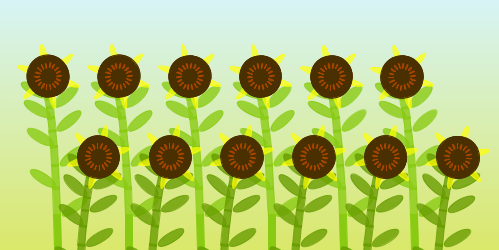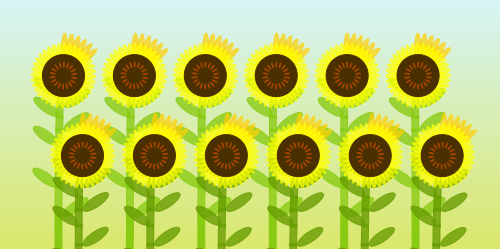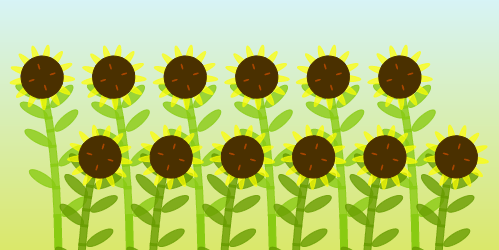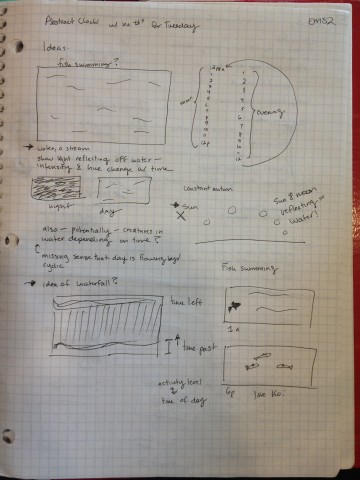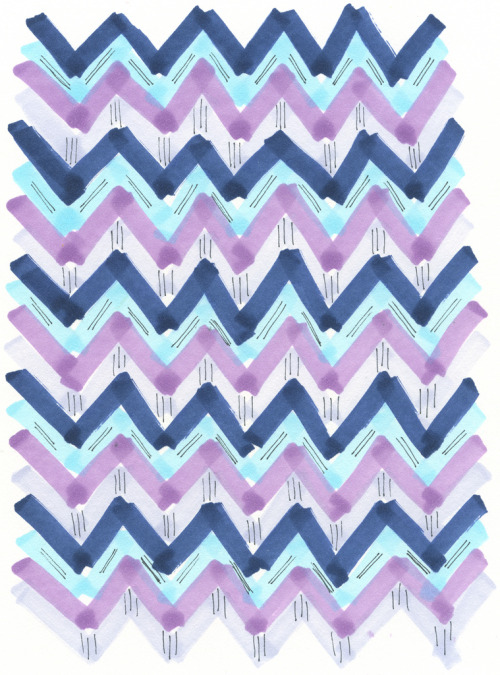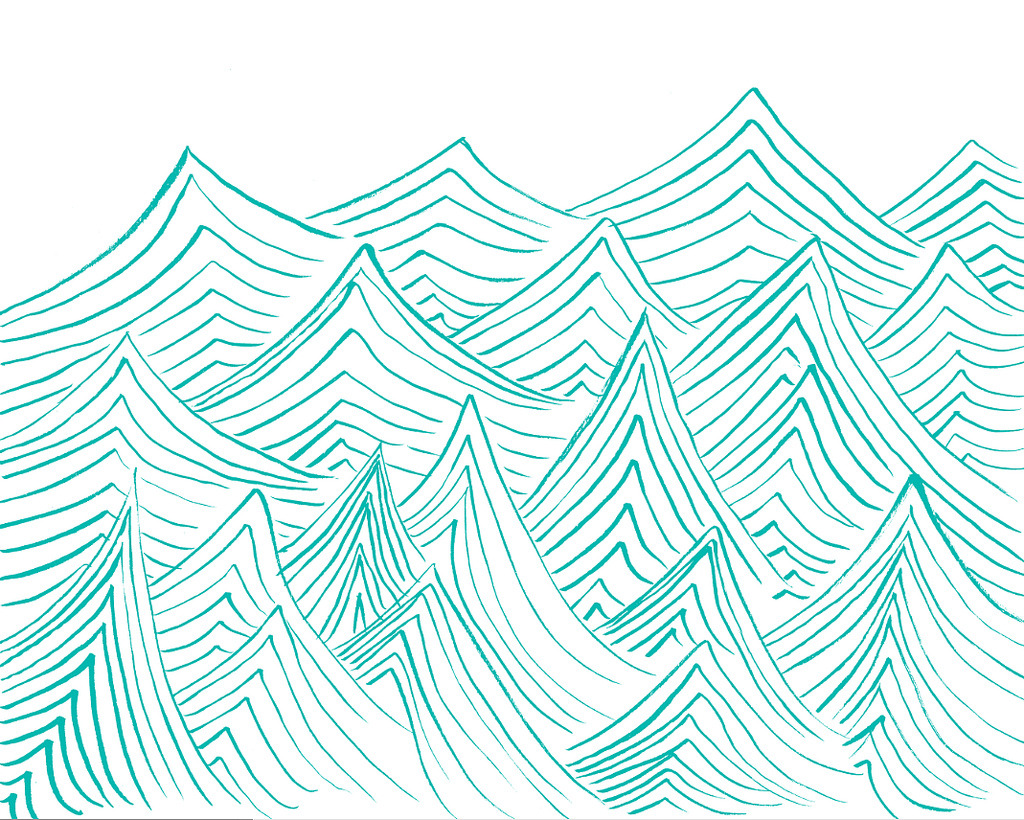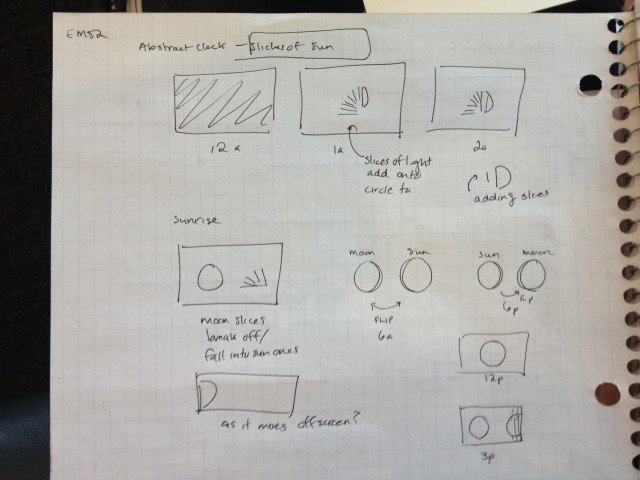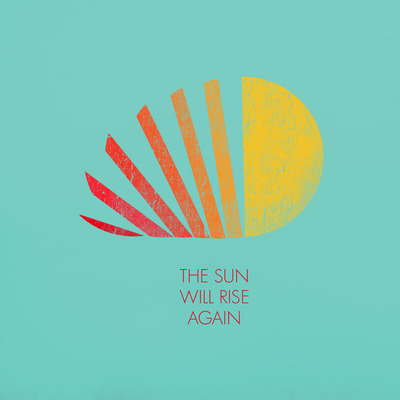Sunflower Time
Sooooo I fixed the green leaves! Sort of. I found out that, when creating arc shapes in Java, the fill turns out differently in Js. So I just used ellipses instead.
My inspiration for this was a pendulum. I wanted to do a cat tail, but I went with sunflower stems instead. Shoutout to Golan for teaching me the concatenated rotations!
Anyways, the stalks sway every second. The petals of the sunflowers appear every minute. (There are two rows of petals, one light yellow and one yellow orange. Each row holds 30 petals max.) The petals just appear. They don’t grow or anything. I need to work on that. The hours were also tricky, and could use a lot of room for improvement. My original plan was to have a flower pop up every hour, but I didn’t know how to do that with my weird for loops. So I decided to have the center of the sunflower have lines for every hour on a 0-24 hour clock.
Sooooo there you have it.
Here are some screenshots followed by my code:
color[] blues={#D7F4F6};
color[] browns={#4A3000,#A64500};
color[] greens={#679B00,#89CB12,#DBE86A,#4F5F03,#C2E656};
color[] petals={#FFC700,#F79E00,#FFFF00,#FFCF00};
void setup(){
size(500,250);
frameRate(30);
}
void draw(){
backdrop(blues[0],greens[2]);
drawGroups(greens[1],-1,0,-10);
drawGroups(greens[0],1,80,10);
}
void drawGroups(color stemCol,int direction,int shortness,int margin){
float xSpacing=width/7.0;
for(int i=1;i< =6;i++){
pushMatrix();
translate(xSpacing*i+margin,height+shortness);
drawFlower(stemCol,direction);
popMatrix();
}
}
void drawFlower(color stemCol,int direction){
float len=40;
float speed=0.001;
float t=map(sin(millis()*TWO_PI*speed),-1,1,-2,2);
stroke(stemCol);
fill(stemCol);
pushMatrix();
rotate(-HALF_PI);
for(int i=0;i<12;i++){
len*=0.83;
rotate(radians(direction*t));
rect(0,0,len+2,-7);
translate(len,0);
if(i<8){
drawLeaves(stemCol,i);
}
}
drawPetals(petals[3],20,45,30);
drawPetals(petals[2],10,45,0);
popMatrix();
}
void drawPetals(color c,int margin,int len,int time){
float min=360/(minute()+1);
for(int i=0;i<=minute()-time;i++){
pushMatrix();
rotate(radians(min*i));
stroke(c,175);
fill(c,175);
ellipse(margin,0,len,7);
popMatrix();
}
drawHead();
}
void drawHead(){
float hr=360/(hour()+1);
stroke(browns[0]);
fill(browns[0]);
ellipse(0,0,42,42);
stroke(browns[1]);
fill(browns[1]);
for(int i=0;i<=hour();i++){
pushMatrix();
rotate(radians(hr*i));
ellipse(11,0,5,0.75);
popMatrix();
}
}
void drawLeaves(color c,int num){
fill(c,200);
stroke(c,200);
if(num%2==1){
pushMatrix();
rotate(radians(-55));
ellipse(20,0,30,10);
popMatrix();
//arc(-31,-31,60,60,0,PI/2.0,OPEN);
//arc(0,0,60,60,PI,3.0*PI/2.0,OPEN);
}
else{
pushMatrix();
rotate(radians(235));
ellipse(-17,0,30,10);
//arc(0, 0, 60, 60, 0, PI/2.0, OPEN);
//arc(31,31,60,60,PI,3.0*PI/2.0,OPEN);
popMatrix();
}
}
void backdrop(color c1, color c2){
noFill();
for(int i=0;i<=height;i++){
float inter=map(i,0,height,0,1);
color c=lerpColor(c1,c2,inter);
stroke(c);
line(0,i,width,i);
}
}
